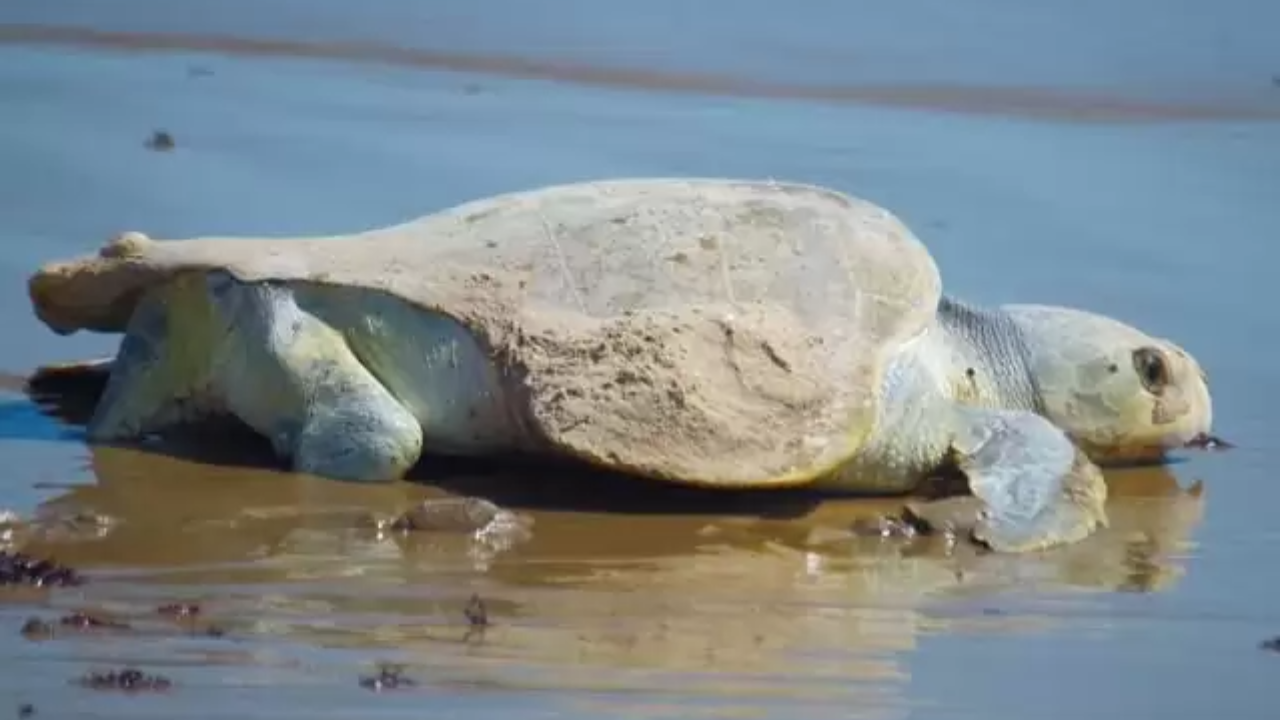Jeff George, the executive director of Sea Turtle, Inc., recently received an urgent phone call from South Padre Island, Texas. A concerned individual had spotted a sea turtle with a noticeably large chunk missing from her shell. This turtle had made an appearance on the same beach just over a month ago, crawled onto the shore, dug a nest, and laid 85 eggs. Sadly, before the turtle could be photographed again, she had disappeared back into the ocean. However, she had now returned with a purpose – to dig another nest and lay more eggs.
Although the exact cause of the turtle’s injury is unknown, it is suspected that a predator had attacked her. Jeff George hypothesized that it could have been a fish during her early stages of life, or possibly a shark later on. The missing chunk from her shell had probably hindered the turtle’s swimming and buoyancy abilities, and definitely impacted her movement on the sand. Jeff George observed that she was limping and crawling sideways, but this mother turtle was determined to carry out her maternal duties, laying 62 eggs this time around.
Witnessing this turtle lay eggs was an uplifting experience for Jeff George, especially considering that she was a Kemp’s ridley sea turtle – the rarest and critically endangered sea turtle species. The main reasons for their endangerment include the destruction and loss of nesting areas, as well as getting caught in fishing gear such as nets and longlines.
During the turtle’s nesting period, Jeff George made an unconventional decision to help her dig, as she was having difficulty due to her injury. He explained that she had chosen a challenging spot with hard sand to lay her eggs, and he felt compelled to lend a hand. Using his own hands, he dug the nest for her as she struggled with the short stub of her flipper.
Once the mother turtle had finished laying her eggs, she promptly made her way back to the ocean. Although she won’t be present to see her babies hatch, Jeff George and his team will ensure that the eggs are adequately taken care of. They moved the eggs to a secure hatchery to ensure their safe passage to the ocean.
Kemp’s ridley turtles typically lay three batches of eggs, and Jeff George believes that this lot of 62 eggs may have been this mother’s third nest. He hypothesized that the first nest would usually have more than 100 eggs, indicating that this was likely her third nest. Alternatively, her reproductive system may have been impacted by the predator attack, reducing her capacity to generate more eggs.
Jeff George noted that after her body recuperates, the turtle would be ready to nest again in a couple of years. The fact that she was able to lay eggs despite her injury is a testament to the remarkable survival instincts of sea turtles, and their resilience as a species.







